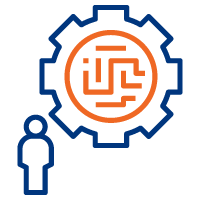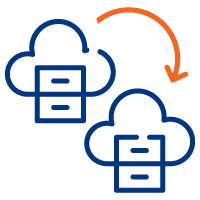Concierto Continues ASEAN Success: From Vietnam to…
Introduction
Cloud maturity is increasing, but even with all the technological advancements, companies still grapple with migrations that are more complex, time-consuming, and expensive than they should be.
Businesses across the globe are looking to the cloud to modernize processes and transform operations, leveraging AI, and automation. Cloud offers great potential to improve productivity, accelerate innovation, and increase revenue, making organizations more inclined to adopt scalable cloud technologies.
But most organizations face the complexities of cloud migration when moving on-premises infrastructure because legacy models are often barriers to efficient digital transformation, with laborious migration approaches that are slow, complex, and expensive.
Concierto, a zero-code, hyper-automated cloud migration platform, solves the inefficiencies of typical cloud migrations. By automating and streamlining the process, Concierto helps overcome challenges in traditional methods, enabling engineering teams to migrate quickly and efficiently while reducing risks and minimizing downtime.
The Challenges of Legacy Cloud Migrations
When a company adopts new technologies and finds itself adapting to changes made by a third-party provider, there can be problems to tackle as part of the process, as opposed to on-premises infrastructure. Software and data, for instance, might not work properly or be accessible as expected after migration, which can disrupt operations and cause unwelcome chaos.
While companies naturally try to mitigate such issues, these challenges can seem overwhelming because traditional cloud migration is often ineffective, resource-intensive, and time-consuming.
Following are some of the most common cloud migration challenges organizations face:

Complexity and Technical Expertise
Migrating all applications to the cloud is uniquely challenging for every organization, making it important to understand both what to do and what not to do, as legacy migrations require specialty skills.
Organizations often need specialized IT teams and cloud architects to manage these processes, but the cloud engineering field frequently faces a critical skills gap. This gap results in poor understanding between application dependencies and interconnected services, leading to ineffective planning and execution, making the process even harder.

Lengthy Cloud Migration Timelines
A common problem organizations face is moving operational technology (OT), integral to their core business processes, to the cloud. These systems are intricate and so deeply embedded in their operations that they require specialized skills from service owners (admins, developers, etc.), who may lack the skills to work in complex cloud environments.
Another factor, migrating an entire infrastructure also takes longer because of the need for constant configuration and testing, which is very time-consuming.

Human Error
Human error is a leading cause of cloud outages and security threats, posing a significant challenge to successful migrations. Manual migration processes are highly susceptible to human error, such as misconfigurations, API security lapses, inconsistent telemetry settings, or other technical oversights, particularly when dealing with complex infrastructures. And these errors can have serious consequences, impacting customer trust, damaging brand reputation, and hurting the bottom line.

Scalability Challenges
For large enterprises managing thousands of servers or applications, scaling migrations can be a logistical nightmare. Legacy approaches often require phasing out workloads, which prolongs the process and increases complexity. And this phased approach can lead to inconsistencies, errors, and security vulnerabilities if not intensively managed.

Multi-Cloud Migration Challenges
Multi-cloud migration is also a big hurdle for many organizations. It’s not simply about having workloads on different platforms but seamlessly managing, integrating, and orchestrating those workloads across diverse environments. This brings a heightened level of network complexity, making organizations more prone to latency, connectivity, and routing issues that can be mistaken for cloud platform performance problems.
And so, achieving true multi-cloud flexibility means overcoming inconsistencies in tools, APIs, security protocols, and management interfaces. Without a unified approach, however, multi-cloud environments can become fragmented and difficult to manage, limiting agility and increasing operational overhead.

Cloud Cost and Optimization challenges
Cost is often a major concern for organizations considering cloud migration, particularly when legacy methods are involved. To improve cloud migration investments, IT leaders continue mulling over ways not just to optimize initial costs but gain greater control over cloud spending from the ground up. This is because traditional migration methods can strain your budget, even after a successful migration, as things like over-provisioned resources can lead to increased cloud waste, further inflating your cloud bill.
Concierto: Disrupting Legacy Migrations
As organizations increasingly modernize their processes and adopt cloud technologies, continuing to migrate workloads, critical applications, and operations to the cloud, things can unexpectedly go wrong, as touched on in the Challenges to Legacy Cloud Migrations section. Concierto addresses these challenges directly by providing a zero-code, hyper-automated platform that redefines the migration process.
Here's how Concierto is changing cloud migrations:

Zero-Code Automation: Reducing Complexity for Users
Concierto solves common challenges with its zero-code architecture, enabling organizations to manage migrations without relying on cloud engineers or highly skilled developers. Pre-built workflows and wizards guide users through each step, allowing even non-experienced users to perform complex migrations effortlessly.

Hyper-Automation: Accelerating Migration Timelines
Concierto’s hyper-automation capabilities make migrations up to 200% faster by automating discovery, planning, and execution. This approach significantly reduces manual effort, enabling quick migrations for large-scale infrastructures, including thousands of servers and applications, with exceptional efficiency.

Minimizing Human Error
Concierto automates error-prone aspects of migration, such as discovering infrastructure dependencies and organizing workloads into "move groups." This prevents downtime, ensures data security, and resolves compatibility issues, allowing seamless migrations without compromising application performance.

Multi-Cloud Flexibility: Freedom to Migrate Across Platforms
Concierto’s agentless architecture allows simultaneous migration of all workloads, reducing disruption and ensuring operational continuity. Enterprises can efficiently migrate entire infrastructures while focusing on core business objectives, improving security and streamlining the process.

Cost Efficiency: Pay for Success
Concierto’s FinOps approach ensures cost savings of up to 50% over traditional methods. The pay-for-success model ensures organizations only pay for successful migrations. Tools for right-sizing, cost analysis, and reporting provide visibility into cloud costs, enabling informed decision-making and optimized spending.
Reimagining the Future of Cloud Migrations
The cloud has become the backbone of modern business, and an effective cloud migration strategy is crucial for businesses to innovate, scale, and grow. But the journey to cloud maturity can be fraught with challenges. Whether you are migrating to the cloud for the first time or re-evaluating your existing providers, a well-planned migration is essential to move your applications and infrastructure to any cloud platform seamlessly.
Concierto is designed to streamline and accelerate cloud migrations with automated catalogs and wizards. This empowers you to unlock the full potential of the cloud without the traditional burdens of complex coding, lengthy timelines, and spiraling costs.
With Concierto, you can confidently migrate, knowing you're optimizing your cloud investment for long-term financial efficiency. To this end, take the important step to control resources and spending with AI-enabled insights that provide complete visibility and cost optimization recommendations.


